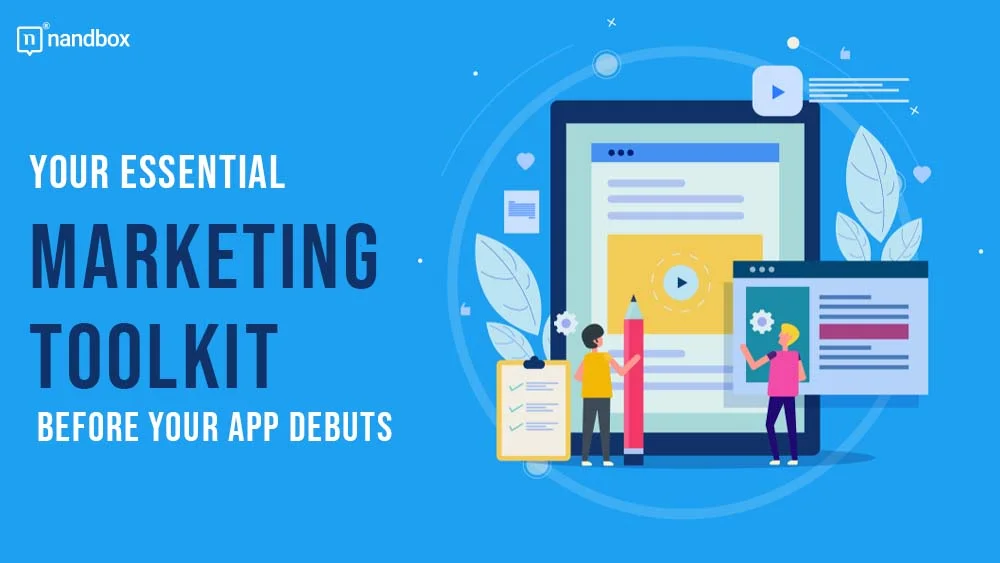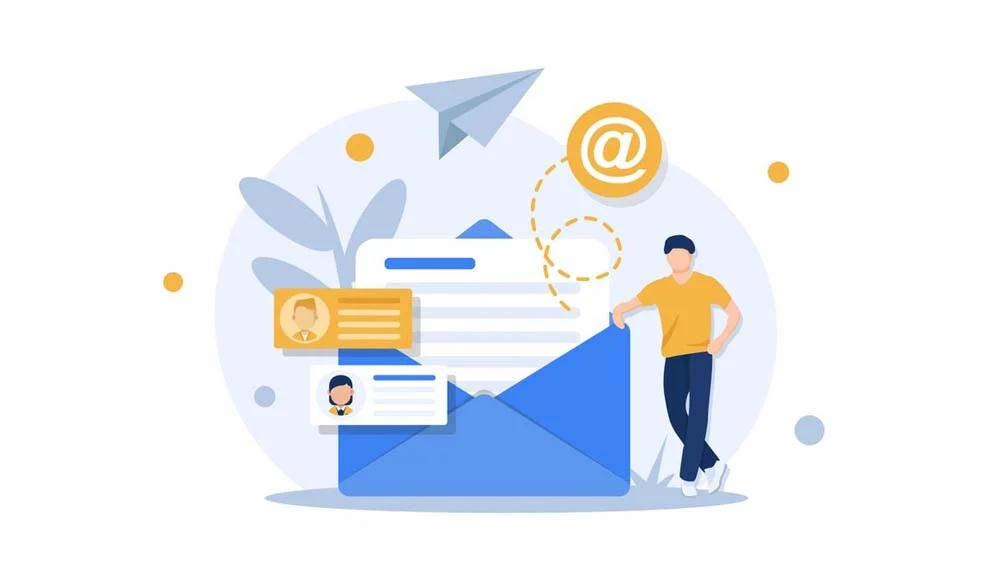When you launch your app, you want to make a big impact. A successful launch can help your app stand out and attract new users quickly. This can lead to positive reviews and word-of-mouth referrals, which are essential for your app’s success. This is where a marketing toolkit come in. A marketing toolkit is a set of strategies and tools that help you promote your app effectively. It guides you on how to get people interested in your app before it goes live and keeps them excited once it’s available. Having a solid marketing plan can make your app launch smoother and more successful.
In this guide, we’ll walk you through the key elements of a marketing toolkit for your app launch. We’ll start with pre-launch planning. Next, we’ll cover how to create strong branding and messaging for your app, leading to important marketing assets like a website, social media, and email campaigns.
In addition to building relationships with potential users, we’ll have some tips for your launch day and post-launch follow-up. By the end, you’ll have everything you need to launch your app like a pro!
Pre-Launch Planning
Pre-launch planning includes the following:
Research and Analysis
Before you launch your app, you need to know who will use it. Understand your target audience’s interests, needs, and habits. This way, you can create an app that people will love and use often. Think about who your ideal users are and create profiles for them. Imagine their age, job, hobbies, and what problems your app can solve for them. This helps you design your app and put together a marketing toolkit to match their needs.
You can also look at apps like yours and see what they do well and where they fall short. Learn from their successes and mistakes. This way, you can find ways to make your app stand out. Stay up to date with what’s happening in your app’s market. What are users asking for? What are the latest features in other apps? Knowing the current trends can help you plan your app’s features and marketing strategies.
Goal Setting
Define Key Performance Indicators (KPIs). KPIs are ways to measure how well your app is doing. Decide which numbers matter most to you, such as downloads, user engagement, or revenue. These KPIs will guide your launch and tell you if your strategies are working.
Break down your goals into smaller, achievable steps. Set milestones like “complete app design” or “reach 100 signups” to track your progress. These milestones help you stay on track and measure success leading up to the launch.
Build a Compelling Brand
Do the following to build a compelling brand:
Brand Identity
Define your app’s mission, vision, and values. Your app needs a clear purpose. What’s your app’s main goal? What values does it stand for? Having a strong mission and vision helps guide your app’s development and marketing.
Choose an app name that’s easy to remember and gives a hint about what your app does. Your logo should be simple but memorable. Pick colors and fonts that match your app’s style. Together, these elements create your app’s visual identity. Plus, using an AI logo maker can streamline this process, helping you quickly generate unique designs that resonate with your brand.
Moreover, keep your app’s look and feel the same across all platforms, like your website, social media, and emails, because consistency helps people recognize your app and builds trust in your brand.
Messaging Strategy
Create clear and engaging descriptions that tell people what your app does and why it’s great. Utilize your marketing toolkit to reach a wider audience with your messaging. Use taglines to capture your app’s essence in just a few words. Make sure your messaging is straightforward and appealing to your target audience.
For example, you can talk about what makes your app different from others. Highlight the unique features or benefits of your marketing. When you emphasize your unique selling points (USPs), potential users will understand why your app is special and worth trying out.
Create Buzz Before Launch
We’ve got the right marketing toolkit that we can use to create buzz before the launch:
Website and Landing Page
A website or landing page acts as a central hub for your app. It’s where people can learn more about your app and sign up for updates. This helps build interest and anticipation before your app launches. Additionally, if you’re building a WordPress site, consider the benefits of WordPress hosting.
Remember, your page should have clear and simple information about your app’s features and benefits. Add call-to-action buttons that encourage people to sign up, download, or learn more. Use visuals like images and videos to make the page more engaging.
Social Media
Choose social media platforms where your target audience hangs out. This is where you should post content about your app to reach potential users. Share fun and interesting content, like sneak peeks of your app, behind-the-scenes moments, and short videos. This keeps your audience excited and curious about your app.
Content Marketing
You can do content marketing in multiple ways:
- Blog Posts, Articles, or Guides About Your App or Industry: Write helpful blog posts or articles that provide useful information related to your app or industry. This can attract more visitors to your website and help establish your app as a trusted resource.
- Video Content (App Tutorials, Demos, or Testimonials): Create videos showing how your app works or share testimonials from people who’ve tried it. These engaging videos can give potential users a better understanding of your app.
Email Marketing
Build an email list to generate buzz around your app launch. Start by gathering email addresses from people interested in your app. You can incentivize sign-ups by offering early access, special updates, or other perks. To keep your audience engaged, utilize a reliable email hosting service to send regular emails with app updates, news, and exclusive content. This consistent communication builds anticipation and keeps your launch fresh in their minds. Pair this with a DMARC generator to authenticate your emails, ensuring they reach inboxes securely and maintain trust with your audience.
Advertising
Advertising is one of the marketing tools, including Pay-per-click (PPC) campaigns, such as Google Ads and Social Media Ads. PPC campaigns allow you to advertise your app on platforms like Google or social media. You only pay when someone clicks on your ad, making it a cost-effective way to drive traffic.
Consider advertising with other apps to reach your target audience. You can also partner with other apps or brands for cross-promotion, which can introduce your app to new users. You can also create a business logo to enhance your brand identity.
Community Building and Engagement
Build Anticipation
Provide early access or beta testing opportunities. Offer a sneak peek of your app by allowing some users to try it out before the official launch. Use various marketing tools to promote early access and build anticipation.
This can create excitement and help you gather feedback to make improvements. You can also run contests or giveaways with prizes related to your app. This encourages people to share your app with others and builds buzz around your launch.
Customer Relationship Management
Stay connected with your audience by replying to their comments and questions on social media and other platforms. This shows you care about their experience and helps build trust. Ask users for their opinions and reviews.
This can help you improve your app and provide social proof for new users. Keep in mind that positive reviews can boost your app’s reputation and attract more people to try it out.
Launch Day Strategy
Countdown and Hype
- Use social media to count down the days until your app’s launch. Share teasers and fun content to keep people excited. Send emails with updates and reminders to your mailing list.
- Send out last-minute updates and announcements on launch day. Let people know the app is live and where they can download it. This can help create a sense of urgency and increase downloads.
Post-Launch Follow-Up
Keep an eye on how users are interacting with your app. Use marketing tools to gather and analyze app usage data, reviews, and comments on your website to see how people are responding. This helps you understand what’s working well and what might need improvement.
Based on the feedback you receive, make any necessary changes to your app. This could include fixing bugs, improving features, or adjusting your marketing strategy. Being responsive to user feedback shows that you value your community and want to provide the best experience possible.
Conclusion
In conclusion, launching your app like a pro means preparing with well-rounded marketing tools that cover everything from pre-launch planning and community engagement to creating hype and adjusting based on user feedback. By focusing on building strong relationships with your audience and maintaining consistency across your branding and messaging, you set your app up for a successful launch and sustained growth. Stay proactive, responsive, and adaptable to user needs, and you’ll be well on your way to making a lasting impact in the app market. Best of luck with your app launch!





